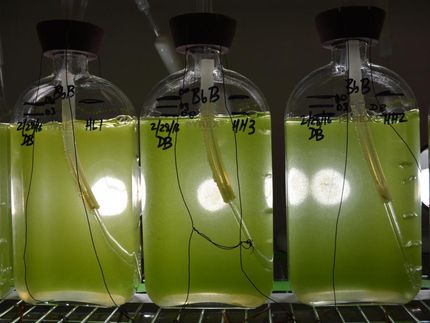Protein power for Jack and the beanstalk
Between shoot and root, Tel Aviv University unlocks a new tool for the biofuel industry
Plant geneticists are on a determined quest — to control auxin, a powerful plant growth hormone. Auxin tells plants how to grow, where to lay down roots, how to make tissues, and how to respond to light and gravity. Knowing how to manipulate auxin could thus have enormous implications for the production of biofuel, making plants grow faster and better.
A publication in PLoS Biology from the laboratory of Prof. Shaul Yalovsky of Tel Aviv University's Molecular Biology and Ecology of Plants Department describes a special protein, the ICR1, found to control the way auxin moves throughout a plant affecting its development. When this protein is genetically engineered into valuable biofuel crops such as corn, sugarcane or experimentals like switchgrass, farmers can expect to get a far larger yield than what they harvest today, Prof. Yalovsky has found. In short, much more biofuel for the buck.
"We've found a mechanism that helps the shoot and root talk to each other," says Prof. Yalovsky. "Somehow both parts of the plant need to speak to each other to say: 'Hey down there, I'm up here and there's lots of sun,' or 'I'm down here in the roots and it's too dry.' The plant's shoots need to respond to its environment. We've discovered the mechanism that helps auxin do its job."
Auxin is considered the most important plant hormone for plant growth and root growth. Prof. Yalovsky explains that knowing how to manipulate it can lead to much bigger yields of non-food crops, like those needed for biofuel. Efficiency is now a limiting factor in biofuel production, and scientists are looking for anything that can produce biofuel in the same amounts as the production of traditional fossil-based fuels.
The ICR1 protein that Prof. Yalovsky has isolated works together with a group of proteins called ROPs, which his lab also isolated in previous research. Together, this system of work in harmony to manipulate the composition and vascular tissues of plant cell walls. The researchers found specifically that ICR1 can be manipulated and, as a consequence, influence auxin distribution in plants. Plant scientists now have a tool that allows breeders to grow certain plant organs of choice, with the possibility of manipulating plant cell wall composition –– the kinds of tissues needed in making biofuel.
In PLoS Biology, the researchers spell out the links between the mechanisms that regulate cell structure and the development of the whole plant. The ICR1, they explain, influences the way the hormone auxin moves around the plant.
Plant tissue is made of cells engulfed in a tough cell wall that helps it retain shape and rigidity. It's composed of cellulose, a polysaccharide, and lignin, which is the woody material in a plant. Current methods for removing the unwanted lignin in the cell wall - which must be removed to produce biofuel - amounts to about a 50% loss cellulosic material which could be used for biofuel.
Ideally crop growers want to maximize the amount of cellulose in the plant, which can be broken down to make sugar for ethanol. The new system found in proteins and developed at Tel Aviv University has the potential to increase crop yield and make fuel production more cost-effective. His approach could mean less lignin, more cellulose and ultimately more biofuel, says Prof. Yalovsky.
Most read news
Other news from the department science

Get the life science industry in your inbox
By submitting this form you agree that LUMITOS AG will send you the newsletter(s) selected above by email. Your data will not be passed on to third parties. Your data will be stored and processed in accordance with our data protection regulations. LUMITOS may contact you by email for the purpose of advertising or market and opinion surveys. You can revoke your consent at any time without giving reasons to LUMITOS AG, Ernst-Augustin-Str. 2, 12489 Berlin, Germany or by e-mail at revoke@lumitos.com with effect for the future. In addition, each email contains a link to unsubscribe from the corresponding newsletter.


















































